From the Pinboards: Five Reading Nooks
Here’s a little inspiration to kick off the weekend! Five cozy, orderly, reading nooks designed for kids: … Continue reading
| Get our best resources as a monthly subscriber! Learn More |
Here’s a little inspiration to kick off the weekend! Five cozy, orderly, reading nooks designed for kids: … Continue reading
It’s that time of year again, when we get to start fresh and tackle some of those organizational projects that have been lingering on our lists for a while. Last week we talked about getting a handle on our toy collections, and I wanted to follow up with a bit of visual inspiration to get in there and make a well-organized, accessible place for your kids to play and create!
I especially love this studio, featured on Martha Stewart, which is filled to the brim with beautifully arranged art supplies. The studio is actually the at home work space of Editorial Director Darcy Miller, but she has created a way to involve her children by inviting them to create with her in the space. Isn’t that lovely? You can see more of her studio here.
Looking for more visual inspiration? Find more ideas for getting organized and creating functional spaces over on the Playful Learning Pinterest boards, we’d love to have you follow along!
Do you have any tips for creating organized spaces? If so, please share!
photo 1, photo 2, photos 3 & 4
If you are interested in discovering more practical tips for creating inviting spaces for the children in your life, check out our Playful Learning Spaces online class…

Participants in the Playful Learning Spaces Workshop will often ask about the best way to get started creating engaging spaces for their children. I think it is most practical to start with something simple. When we start out by wanting to tackle the big areas in our home, it can become overwhelming and often lead to analysis paralysis—and not much being accomplished.
I have seen that little changes can make a big difference and are a great way to build your confidence and create a positive momentum. It is for this reason that I often recommend that people start by finding a little nook or corner in their home where they can leave out a theme-based basket of materials for their children to discover. When you start looking through your children’s toys and materials with the idea of sorting them by themes, you will often find that you already have everything you need to create an inviting nook. You will be amazed to find that old toys presented in new ways can spark a fresh interest in your child.
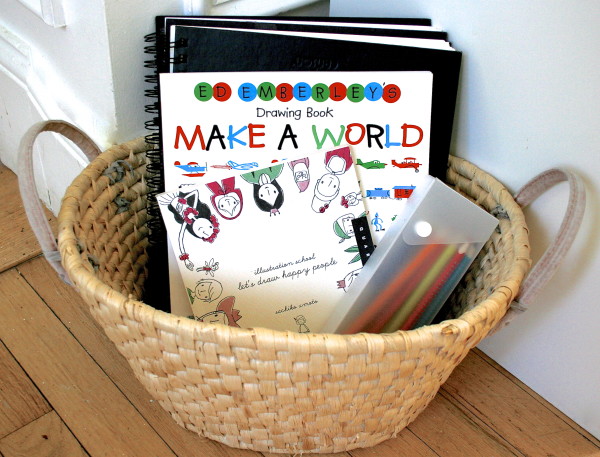
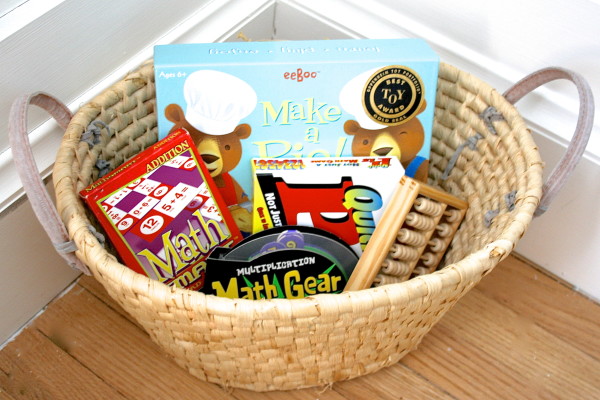
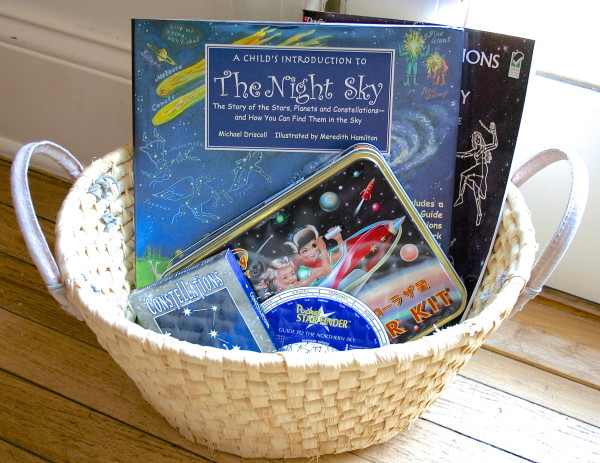
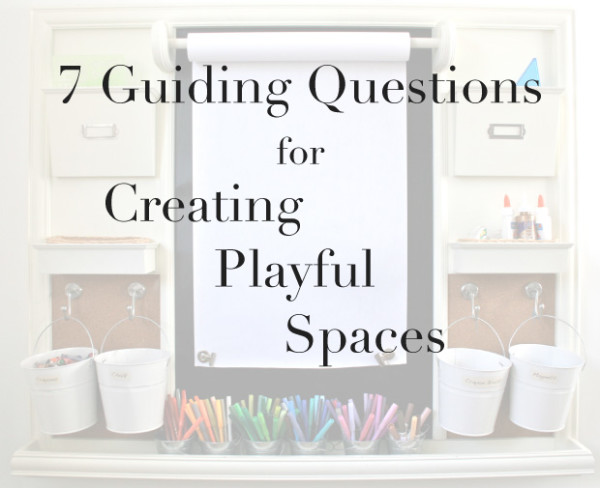
At times it can feel daunting to tackle the spaces in our homes that need our attention—especially when they are the places that our children inhabit most. We want to create playful spaces that encourage creativity and open-ended explorations, yet it seems like we have so much stuff to contend with.
I often find it helpful, before I get started, to step back and get a clear view of the big picture. Below are some guided questions that will help you to visualize and clarify your intentions and goals for the spaces you create for your children.
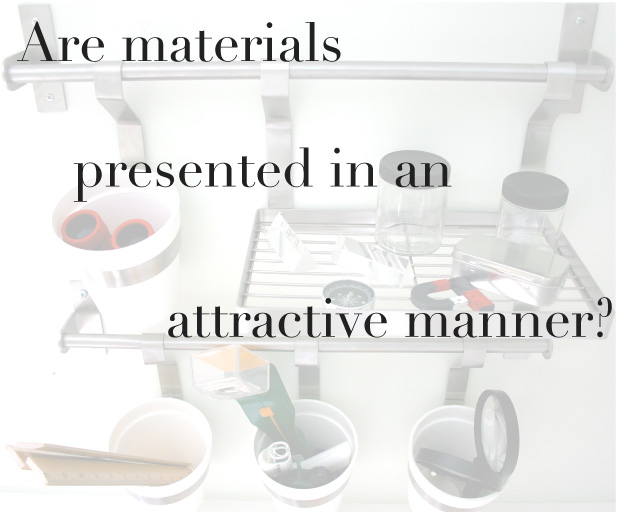

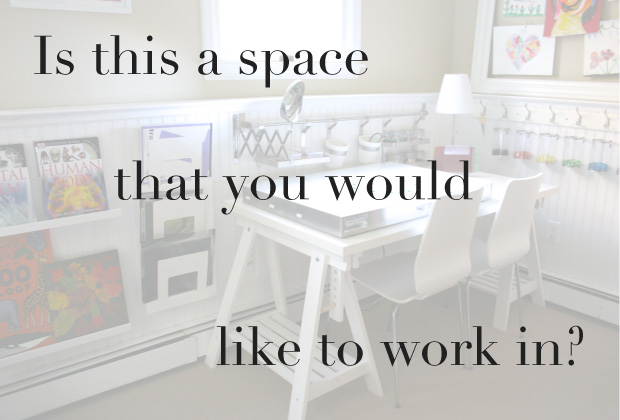
Whenever I am in need of a new storage solution or simply a dose of inspiration, I love to peruse the many places around the web that offer creative and beautiful ideas. There are so many amazing blogs, created by extraordinary women… And then there is Pinterest—where we can share in what our friends and role models fancy. What I love about taking all of this in is that the images are planted like little seeds in my mind. Then when I am out and about and spy that special piece, I know to seize the moment. Below are some examples of inspiration that I have found around the web and how we implemented these ideas in our home.
Inspiration: Ribbon Storage Idea by How About Orange
Implementation:
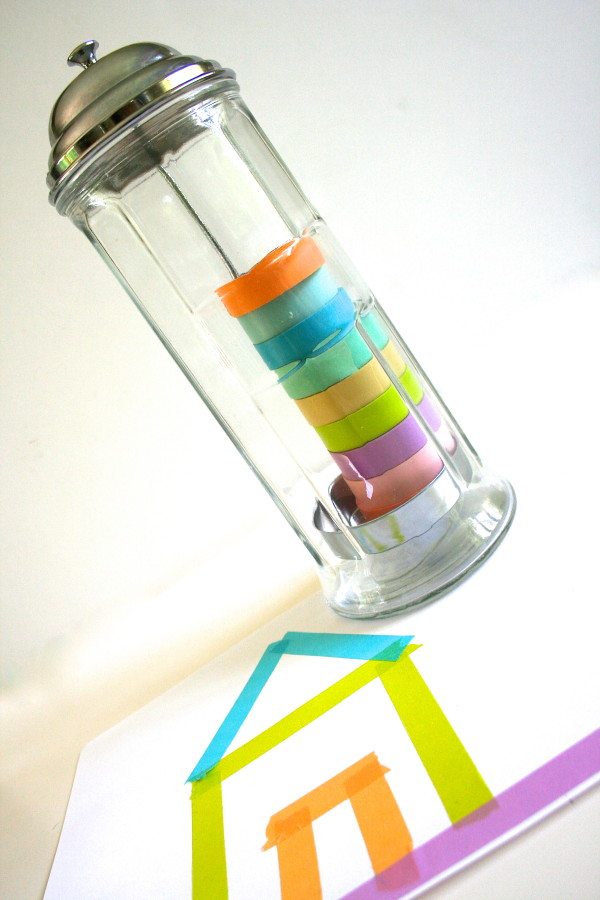
Inspiration: Copic Stuff by My C.A.S.E. Studies
Implementation:
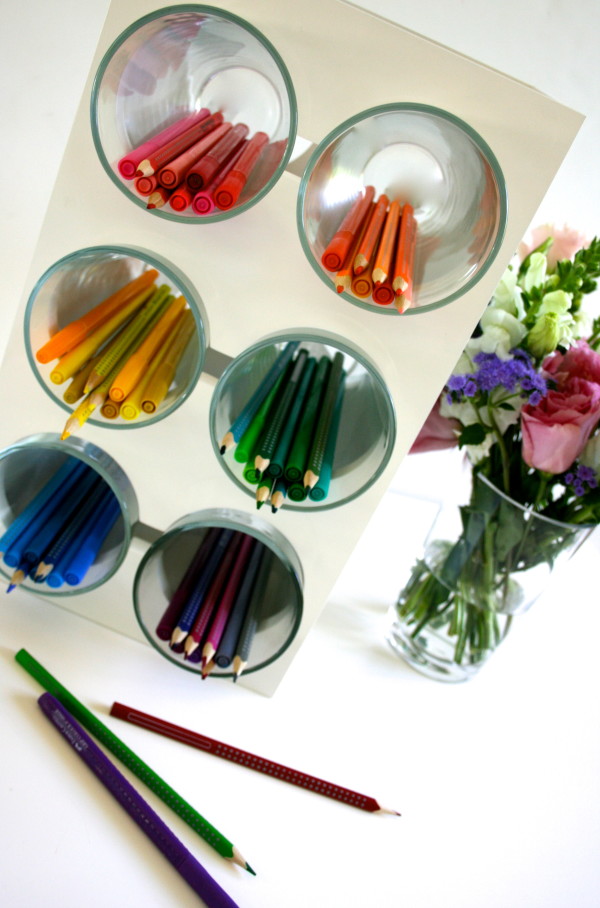
Inspiration: Products to Organize Your Scrapbook Supplies by The Creating Keepsakes Blog
Implementation:
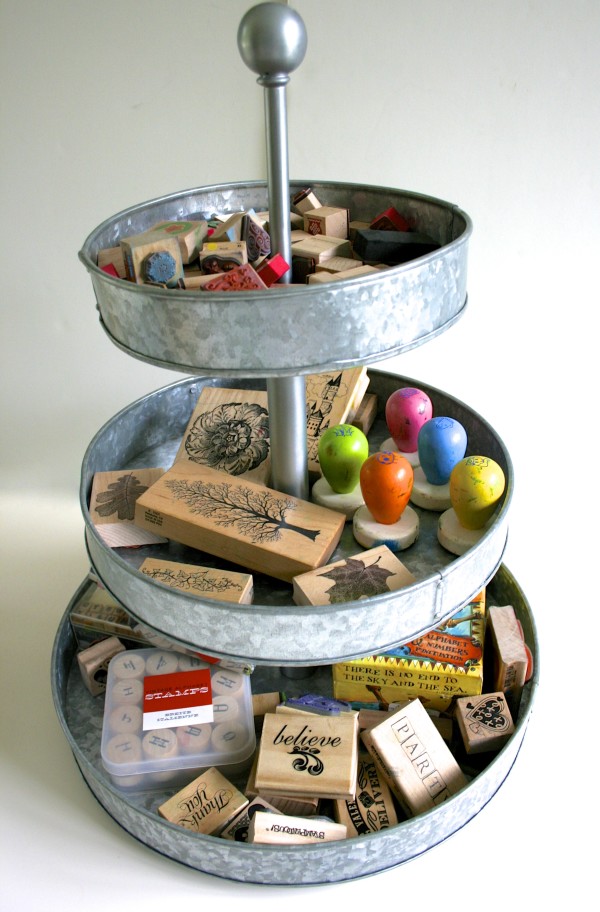
If you are interested in discovering more practical tips for creating inviting spaces for the children in your life, check out our Playful Learning Spaces online class…
 child-size binoculars | magnifying glass | collection jar | bug catcher
child-size binoculars | magnifying glass | collection jar | bug catcher
How Things Work In The Yard by Lisa Campbell Ernst
I am a HUGE believer that the physical environment plays a powerful role in the behavior of children. In both the Playful Learning Spaces eCourse and the Playful Learning 101 miniCourse, I go in-depth about how the presentation of simple invitations can inspire children to engage in meaningful activities.
What I love about creating these invitations is that they are easy (you don’t have to tackle that scary closet) and you can use materials and activities that you already have on hand. It helps to think of these invitations as a way to highlight your child’s underused supplies, games or toys. It is amazing how putting together a few thoughtfully selected items on/in a tray, bin, or basket can reawaken a child’s interest.
And, here comes the best part, all you have to do is leave them out for your child to discover. You don’t have to say a thing!
Here are some of our most recent invitations:
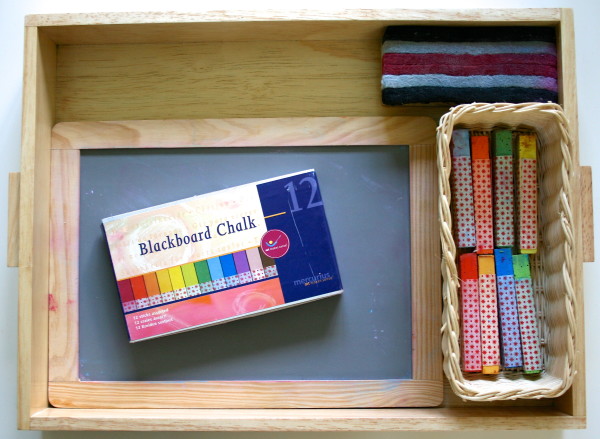 slate chalkboard | blackboard chalk | eraser
slate chalkboard | blackboard chalk | eraser
 shell collection | magnifying glass | shell guide
shell collection | magnifying glass | shell guide
 blank comic book | comic template
blank comic book | comic template
Art Panels, BAM! Speech Bubbles, POW!: Writing Your Own Graphic Novel by Trisha Sue Speed Shaskan
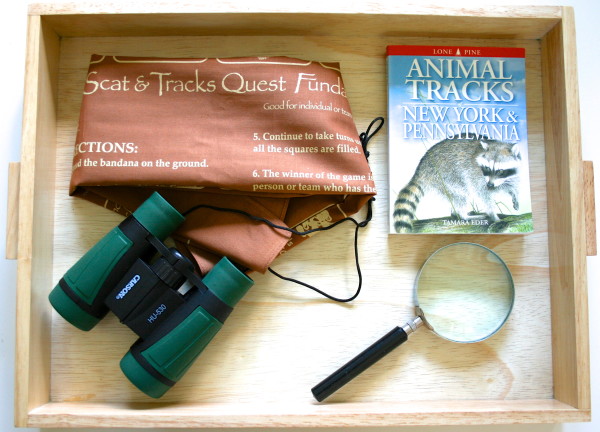 animal track fundana | child-size binoculars | magnifying glass
animal track fundana | child-size binoculars | magnifying glass
For the last few years, our family has taken up residence in a small house near the local hospital where my medical student husband spends a lot of his time. Being near to the hospital means that we get to see him more than we otherwise might, but small space living as a family of four (with a myriad of pets) can sometimes be a challenge. Add to this the changing space needs of growing children, and I find that I often need to reevaluate how we are using our space and what we could change to do a better job of making our home a creative and useable, but also peaceful environment.
Recently, I came across Lori Pickert’s fantastic book, Project-Based Homeschooling, and found myself completely overcome with inspiration. I’m not currently homeschooling my daughter, but we do incorporate a lot of projects into our time together at home. Lori’s book made me realize that I really needed to make some changes to my daughter’s art space to bring it more in line with her needs as an older child (now eight) doing more sophisticated projects and artwork.
My idea was to increase my daughter’s actual useable surface area, while also increasing her storage for materials and giving her a little bit of room for display. Oh, and I was hoping to be able to fit all of this into an area of our living room that is about four and a half feet wide, and to do it using only stuff that we already had around the house. The medical school family bit also means that our budget is tight and that there isn’t a lot of extra money to spend on cute organizational tools, fun though they might be.
I settled on moving our existing art table to a small section of wall that is adjacent to some built-in bookshelves in our living room. Having her project space in a central area of the house is important to me; I have never been one to keep the living room decor “adult only.” The kids live here too, and I feel strongly that their activities should be folded into the common spaces in our home. Plus, we literally have no where else to put them. We hung small display shelves on the wall above her table, and she immediately filled them with favorite collections, such as her jar of beach glass and a row of pretty minerals in decorative jars. One shelf is dedicated to some clay models that she has been working on (for a diorama about penguins that she wants to make). I also hung a small bulletin board for hanging notes, displaying work in progress or for keeping lists of materials that would be useful to have for completing a project.
I cleared out some no longer needed books from the shelves next to her table, and instead, filled the space with a collection of things that she might need easy access to for creative endeavors of all sorts. There are field guides and reference books, magnifying glasses, science kits recently sent by some friends of ours, and some boxes of paper. But from her perspective, the best part of the newly organized area is the fact that she now has free access to all the household art supplies. Her baskets and suitcases contain “real” paint (good quality acrylics and watercolors), as well as modeling clay, high quality markers and colored pencils and various rolls of tape; all materials I may have been more cautious with in the past. In her book, Lori makes mention of the fact that children respond to trust about their ability to use high quality materials responsibly by producing high quality work and I am already finding this to be true.
Here is a list of what I’ve included in Mariam’s project space:
In all, we are already finding that having easy access to a variety of materials that are well-organized can do great things for productivity, enjoyment of creating and for clean-up too. My daughter is encouraged by her independence with using these materials and, I’m pretty pleased to have been able to find a way to incorporate a more organized project space into our small living room by making good use of what was already here.